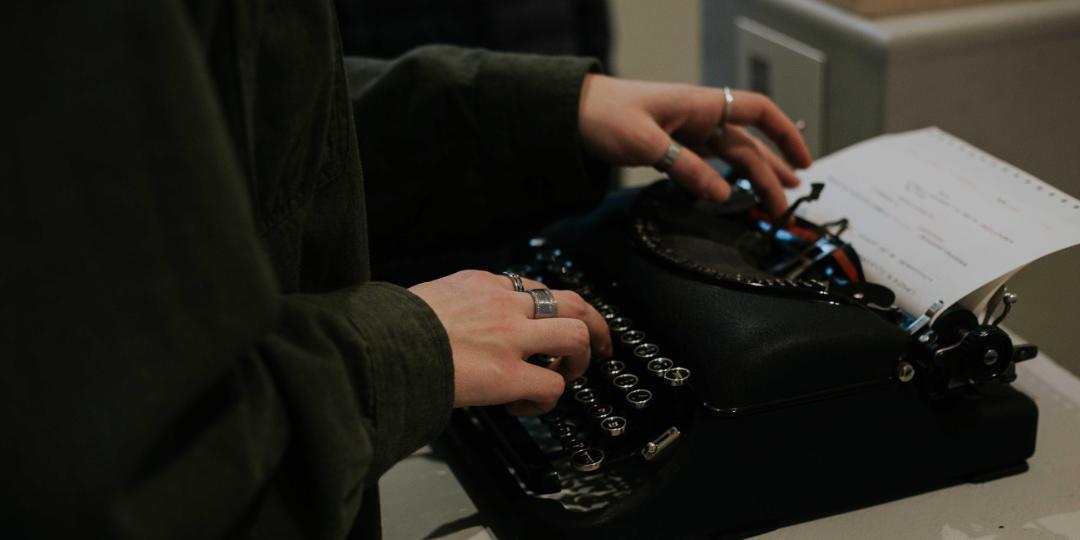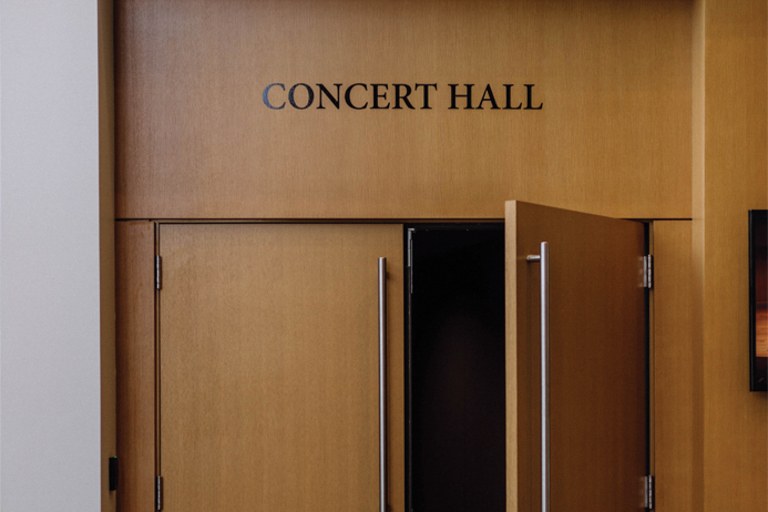Stretching the Limits of Media
“Technotexts” Exhibit in the Walford Galleries Creatively Transforms How We Encounter Language and Literature
Words: Kailin Richardson ’20

One interactive exhibit in the gallery featured a typewriter with Hebraic characters.
Photo by Kailin Richardson ’20
At its opening on February 9, 2023, the “Technotexts” gallery invited many hands to play with words and their mediums. Hands stamping symbols into clay, clacking Hebraic letters on a typewriter, swirling white marks across black paper. This experience mimicked that of the Technotexts classroom, where Professor of English Dr. Richard Gibson and Associate Professor of Art Jeremy Botts help their students explore texts and their physical forms through lectures, discussions, and hands-on making.
A one-of-a-kind course offered at Wheaton, Gibson dreamed up Technotexts for an English seminar class in 2016. Students would study the development of textual technologies over time, covering medieval illuminated writing, the print revolution, digital media, and more.
“What I really wanted was a class that would unite my interests in book history and the digital humanities,” Gibson said.
But the class wouldn’t become what it was meant to be until Botts joined four years later. With a rich background in lettering, he gave students a chance to actively work with different media while asking complex questions.
“A really good artist or designer is somebody who’s thinking about the medium and pushing the boundaries,” he said. “This is great in print, but what else could you make it into?”
The gallery showed off this ebb and flow between what Gibson called “the physicality of a letter or word and its ability to signify.” With projects like elegant calligraphy of the Psalms, a “sky scroll” thrown up to the ceiling in dialogue with God, and towering, laser-cut pillars made of a single letter stacked over and over, students and professors worked together to stretch the limits of media.
Each unique piece asked viewers to realize that “technology is mediating everything we see,” as Botts explained. While they might sound foreign, technotexts surround us.
“The benefit that I see beyond just the aesthetic pleasure and the knowledge you improve by taking the class is an awareness of the fact that we have choices about media,” Gibson said.
With options inspired by oral cultures, print alternatives, and a variety of languages, the “Technotexts” exhibit served as a reminder that there are all sorts of ways to interact with and transmit the texts around us.




